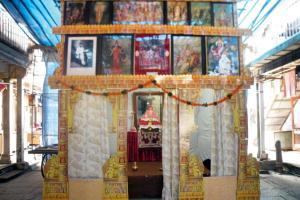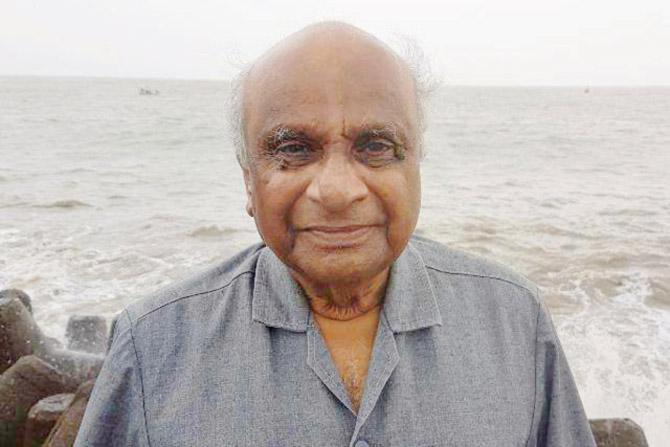A talk this Sunday will trace the tug of war between the liberal and conservative ideologies in India back to the 19th century, explaining how the traditional emerged victorious

Bal Gangadhar Tilak started the first Ganesh festival at Keshavji Naik chawl in Girgaum with an aim to make the freedom struggle a mass movement. Pic/Uday Devrukhkar
A thought, when it emerges in the conscience of a nation, doesn't die out with the passage of time. It only remains dormant, simmering away, waiting for the ripe time to resurface — and taking those who don't find themselves in agreement with it, by surprise. It is here that history steps in, putting things in perspective.
ADVERTISEMENT
In his talk this Sunday, Dr. Mohan David, former head of the history department, University of Mumbai, will trace the journey of the liberal and conservative ideologies in India, back to the 19th century. Titled Ideological Churning and New India, the talk will explore how Mahatma Gandhi and the Congress represented the liberal trend, while Bal Gangadhar Tilak's conservative trend came to be represented by the RSS, which seems to have emerged victorious today. Edited excerpts from an interview.

Dr Mohan David
Tell us about the genesis of the two ideologies.
It all started sometime around 1893. While the moderates, including Gopal Krishna Gokhale and MG Ranade, were working towards securing self-governance in institutions through constitutional means, their movement represented the intellectuals and the middle class. This created a lacuna in the nationalist movement, and Bal Gangadhar Tilak stepped in with his revolutionary call for Swaraj or full freedom. He started the Shivaji festival and Ganeshotsav — which was also in response to the Muslim religious processions of the time — to translate the freedom struggle to the masses.

Mahatma Gandhi came to represent the liberal ideology with his Civil Disobedience and Non-Cooperation movements
In 1920, Gandhi adopted Tilak's idea of bringing the masses together through his non-cooperation, and later, civil disobedience movements, but rejected Tilak's revolutionary ideas. Perhaps, India needed Gandhi's multi-religious framework, as the British were striving to keep the country divided between the Hindus and Muslims. That's why when BK Hedgewar [who had participated in Tilak's Home Rule campaign in 1918] founded the RSS in 1925, it remained a weak organisation.
What led to its re-emergence?
While the Congress still represents the liberal ideology, it is the leadership of the BJP [the RSS being its parent organisation] which is deeply convinced of its ideology. That's why you see Congress MPs defecting to the BJP, but not the other way round. The mass-based reach of the RSS has contributed greatly, too.
Are we taking liberties with representing history today?
This is an ongoing struggle. When the British ruled India, they looked at Indian history from the imperialist point of view. The ideology of those in power rules the roost. The facts remain the same, the interpretation changes.
FREE
ON August 25, 5 pm
AT MCubed Library, Bandra West.
CALL 26411497
Catch up on all the latest Mumbai news, crime news, current affairs, and also a complete guide on Mumbai from food to things to do and events across the city here. Also download the new mid-day Android and iOS apps to get latest updates
 Subscribe today by clicking the link and stay updated with the latest news!" Click here!
Subscribe today by clicking the link and stay updated with the latest news!" Click here!






